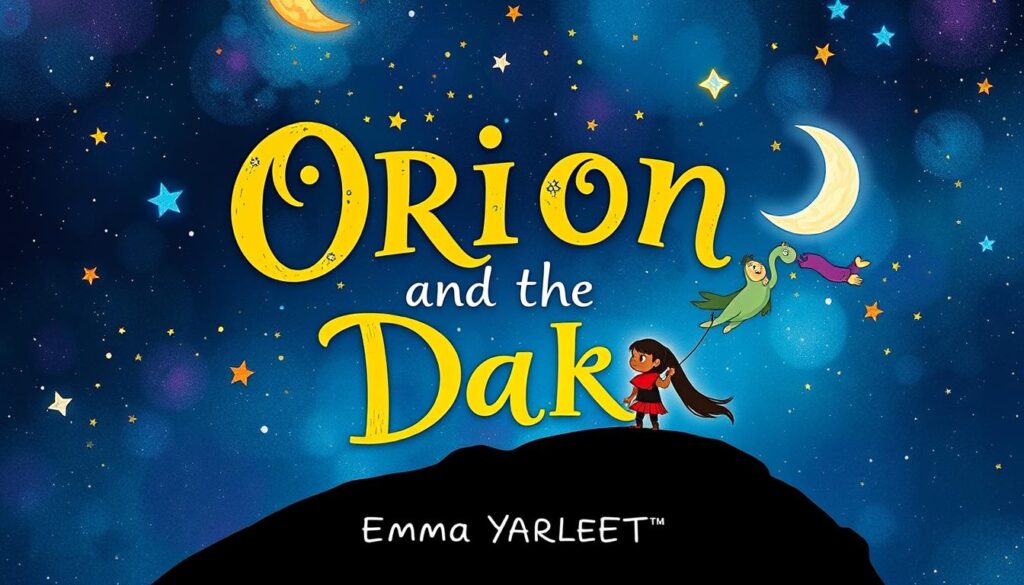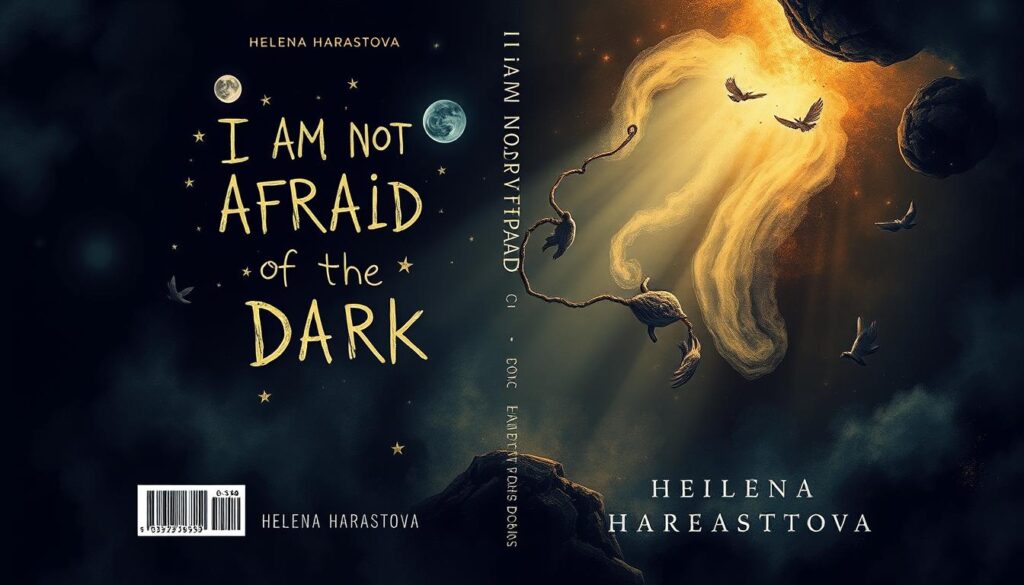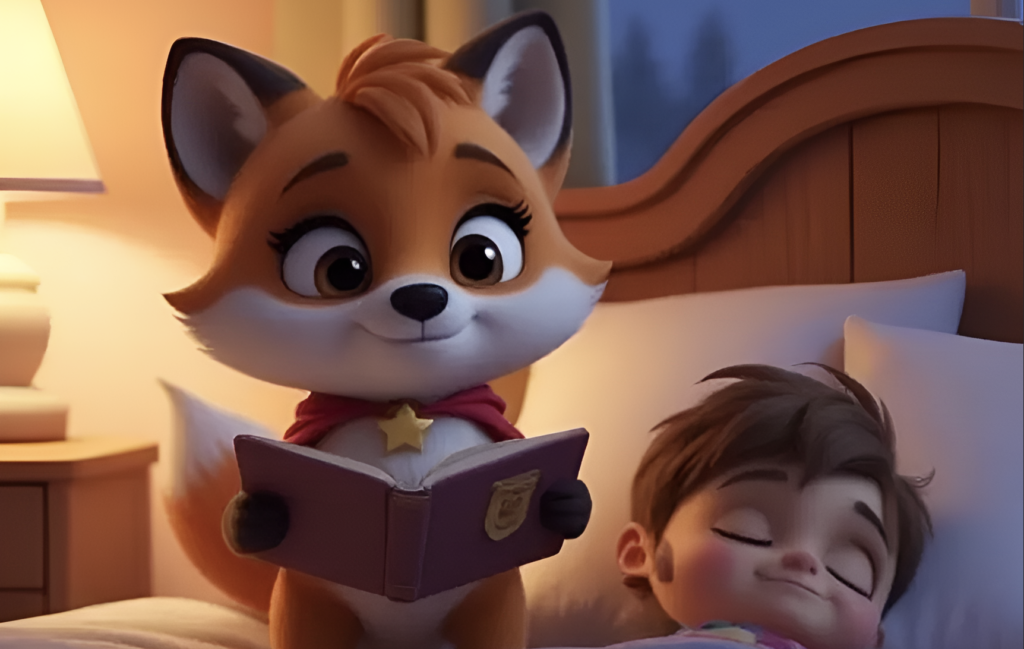Are you tired of hearing your child cry out in the middle of the night, frightened by the darkness? You’re not alone! Many parents struggle to help their little ones feel safe and secure when the lights go out.
As a parent, it can be heartbreaking to see your child afraid of the dark. But what if you could help them transform that fear into courage and confidence? Bedtime stories can be a powerful tool in helping your child overcome their nighttime worries.
By reading the right book together, you can help your child develop the emotional resilience they need to face their fears and feel more secure in the dark.
Understanding Your Child’s Fear of the Dark
Understanding your child’s fear of the dark is crucial for helping them overcome their nighttime worries. As a parent, you’ve likely observed how darkness can transform a previously brave child into a fearful one. This transformation isn’t just about the absence of light; it’s about how our brains process the unknown.
Why Darkness Triggers Fear in Children
Children’s imaginations are powerful tools that can sometimes work against them when the lights go out. The dark becomes a canvas for their worries, and without the visual reassurance of their surroundings, uncertainty takes over. Young children lack the cognitive tools to rationalize their fears, making darkness particularly challenging. The shadows that form in dimly lit rooms can trigger a child’s pattern-recognition abilities, causing them to “see” scary shapes.
Common Nighttime Fears at Different Ages
Nighttime fears evolve as children grow. Preschoolers often fear monsters or intruders, while school-age children might worry about more abstract concepts like death or supernatural elements they’ve encountered in media. Understanding these developmental roots helps us respond with empathy rather than frustration. By acknowledging that their brain is simply working as it should, we can offer targeted support.
How Stories Can Conquer Nighttime Fears
As a parent, I’ve seen firsthand how stories can be a powerful tool in conquering nighttime fears. Stories have a way of creating a safe psychological distance that allows children to process their fears without feeling overwhelmed.
Through storytelling, we can help children develop the bravery they need to face their nighttime fears. By reading about characters who overcome their fears, our children’s brains activate mirror neurons that help them internalize those same brave behaviors.
The Psychological Benefits of Storytelling
Storytelling has several psychological benefits that can help children overcome their nighttime fears. Stories provide children with vocabulary and frameworks to understand and express their emotions, transforming vague anxieties into manageable concepts they can discuss. The predictable structure of stories demonstrates to children that scary situations can be overcome, building their confidence in facing their own challenges.
Creating Safe Spaces Through Imagination
Stories can transport children to new and imaginative worlds, creating safe spaces that foster bravery and adventure. The right stories can transform a child’s bedroom from a place of anxiety to a magical realm where imagination becomes a tool for bravery rather than a source of fear. By reading together, we can create a bonding experience that reinforces our child’s sense of security, showing them they’re not alone in facing their fears.
| Benefits of Storytelling | How it Helps Children |
|---|---|
| Creates safe psychological distance | Processes fears without feeling overwhelmed |
| Activates mirror neurons | Internalizes brave behaviors |
| Provides vocabulary and frameworks | Understands and expresses emotions |

Humorous Stories That Make the Dark Less Scary
Humor can be a powerful antidote to fear, especially when it comes to children’s nighttime anxieties. When children laugh, their fears become less threatening, making it easier for them to manage their nighttime worries.
Night Animals by Gianna Marino
Night Animals by Gianna Marino is a delightful tale that turns the concept of nighttime fears on its head. The story features nocturnal animals who are afraid of each other, creating a humorous and relatable scenario for young readers. The playful illustrations will soothe children’s worries with silly antics and lots of laughs.

What Was I Scared Of? by Dr. Seuss
In What Was I Scared Of?, Dr. Seuss masterfully shows how our imaginations can transform harmless things into scary monsters. This classic tale follows a narrator who is frightened by a pair of pale green pants, only to realize there was nothing to fear all along. The absurdity in this story helps children see the humor in their own fears.

Rabbit’s Bad Habits by Julian Gough
Rabbit’s Bad Habits by Julian Gough is a humorous story about a rabbit who fears the light. This tale will have kids grinning from ear to ear with its unexpected twist on traditional bedtime fears. The rabbit’s antics will provide a much-needed laugh, helping to break the tension and dissolve nighttime worries.

These humorous stories work by creating emotional distance from fears through laughter, allowing children to process their anxieties without feeling overwhelmed. When selecting humorous books about darkness, it’s essential to look for stories that acknowledge fears as real while gently showing their absurdity.
Stories About Befriending the Dark
Some stories have the power to transform the way children perceive darkness. By personifying the dark as a character or exploring its role in a child’s life, these stories help kids understand that darkness isn’t something to be feared. Here are a few examples of such stories.
The Dark by Lemony Snicket
The Dark by Lemony Snicket is a compelling story that personifies darkness as a character. Laszlo initially fears the darkness, but eventually befriends it, showing children that what scares them might be worth getting to know.

Flashlight by Lizi Boyd
Flashlight by Lizi Boyd uses minimal text and clever illustrations to show how a simple beam of light can transform the unknown into a world of wonder. This story helps children see that with a little courage, the dark isn’t so scary.

Orion and the Dark by Emma Yarlett
In Orion and the Dark, Emma Yarlett takes a direct approach by having the Dark itself take a frightened boy on an adventure. This story helps children understand that darkness isn’t something to fear but something to explore and understand.

Brave Characters Who Overcome Their Fears
One effective way to help children overcome their fear of the dark is through stories about brave characters who face similar fears. These stories provide children with role models and strategies to manage their own fears.
I Am Not Afraid of the Dark by Helena Harastova
I Am Not Afraid of the Dark by Helena Harastova is an interactive story that engages children directly, helping them practice bravery. The interactive elements make it a fun and educational experience.

The Berenstain Bears in the Dark by Stan and Jan Berenstain
The Berenstain Bears series is a trusted resource for helping children navigate various challenges, including the fear of the dark. In The Berenstain Bears in the Dark, Brother and Sister Bear use practical strategies to overcome their nighttime fears, providing a relatable example for young readers.

Batman Is Brave by Erin Guendelsberger
Batman Is Brave by Erin Guendelsberger offers a compelling narrative for young superhero fans. The story highlights how Batman overcame his fear of the dark using strategies like deep breathing and asking for help, showing children that even their heroes faced similar fears.

These stories work by providing children with a template for courage that they can emulate. The most effective “brave character” books acknowledge that courage isn’t the absence of fear but rather taking action despite being afraid.
Creative Ways to Use Stories at Bedtime
I’ve found that the way we use stories at bedtime can significantly impact their effectiveness in easing children’s fears. By incorporating interactive elements and personal touches, we can make storytime a powerful tool against the fear of the dark.
Interactive Storytelling Techniques
Using different voices, sound effects, or pausing to ask questions can transform passive listening into active engagement. This technique not only captures children’s attention but also helps them feel more in control of their environment, reducing nighttime anxiety.
Creating Personalized Stories About Your Child
Creating stories where your child is the brave protagonist can be incredibly empowering. I’ve seen children’s eyes light up when they hear themselves described overcoming their fears, building confidence and courage.
Pairing Stories with Comfort Objects or Night Lights
Pairing stories with special comfort objects or using night lights during reading creates a positive association with the dimmer lighting that can trigger fears. A special “brave buddy” stuffed animal or blanket can become a tangible reminder of their courage.
By implementing these creative strategies, you can turn bedtime into an adventure that helps your child overcome their fear of the dark. Whether it’s through interactive storytelling, personalized tales, or comfort objects, the right approach can make all the difference in your child’s bedtime experience.
Conclusion: Empowering Children Through Stories
I’ve seen firsthand how the right stories can turn the darkness from a source of terror into a catalyst for imagination and growth. By using stories to help conquer nighttime fears, you’re not just solving a bedtime problem; you’re teaching your child to face life’s challenges with courage and resilience.
Stories provide emotional vocabulary and imaginative tools, building lasting confidence in children. As you read together, the darkness becomes a canvas for adventure. Remember, overcoming fears is a process; be patient and celebrate small victories. With consistency and the right book, your child will develop the inner resources to tackle whatever comes their way.
FAQ
How can I help my child overcome their fear of the dark?
You can help your child by using storytelling as a tool to create a sense of safety and comfort. Reading stories together about brave characters or overcoming fears can be very effective!
What are some popular storybook recommendations for kids afraid of the dark?
Some great options include Night Animals by Gianna Marino, The Dark by Lemony Snicket, and Orion and the Dark by Emma Yarlett. These stories help kids see that they’re not alone in their fears.
Can I create my own stories to help my child feel less scared at night?
Absolutely! Creating personalized stories about your child can make them feel more connected and in control. You can include their name and favorite characters to make it more engaging.
How can I make storytelling a part of our bedtime routine?
Try incorporating interactive storytelling techniques, such as asking your child to imagine themselves in the story or to predict what might happen next. This can make the experience more enjoyable and help them relax.
Are there any other ways to use stories to help my child overcome their fear of the dark?
Yes! You can also pair stories with comfort objects or night lights to create a cozy atmosphere. This can help your child associate the story with feelings of safety and comfort.




